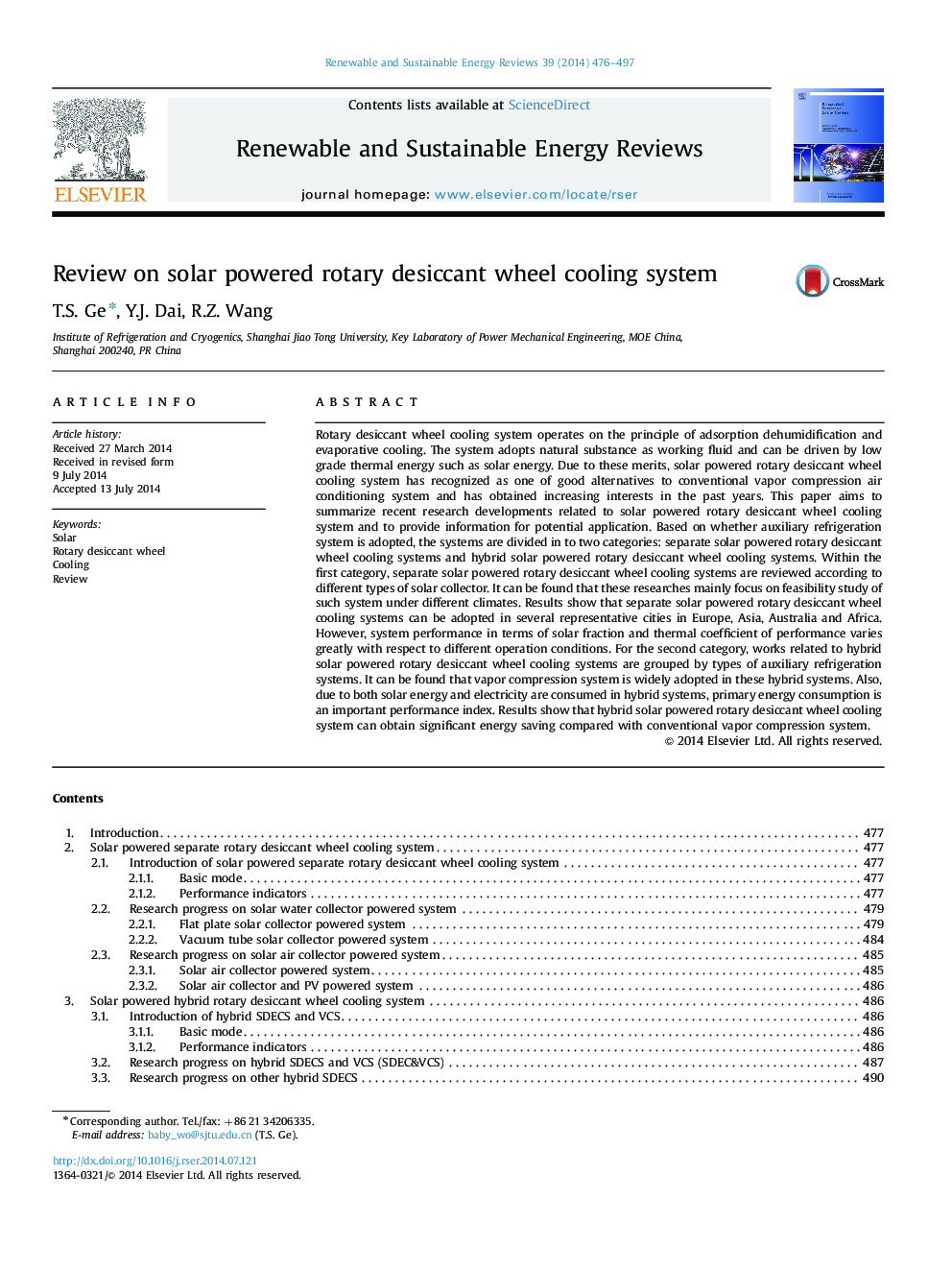| Article ID | Journal | Published Year | Pages | File Type |
|---|---|---|---|---|
| 8119004 | Renewable and Sustainable Energy Reviews | 2014 | 22 Pages |
Abstract
Rotary desiccant wheel cooling system operates on the principle of adsorption dehumidification and evaporative cooling. The system adopts natural substance as working fluid and can be driven by low grade thermal energy such as solar energy. Due to these merits, solar powered rotary desiccant wheel cooling system has recognized as one of good alternatives to conventional vapor compression air conditioning system and has obtained increasing interests in the past years. This paper aims to summarize recent research developments related to solar powered rotary desiccant wheel cooling system and to provide information for potential application. Based on whether auxiliary refrigeration system is adopted, the systems are divided in to two categories: separate solar powered rotary desiccant wheel cooling systems and hybrid solar powered rotary desiccant wheel cooling systems. Within the first category, separate solar powered rotary desiccant wheel cooling systems are reviewed according to different types of solar collector. It can be found that these researches mainly focus on feasibility study of such system under different climates. Results show that separate solar powered rotary desiccant wheel cooling systems can be adopted in several representative cities in Europe, Asia, Australia and Africa. However, system performance in terms of solar fraction and thermal coefficient of performance varies greatly with respect to different operation conditions. For the second category, works related to hybrid solar powered rotary desiccant wheel cooling systems are grouped by types of auxiliary refrigeration systems. It can be found that vapor compression system is widely adopted in these hybrid systems. Also, due to both solar energy and electricity are consumed in hybrid systems, primary energy consumption is an important performance index. Results show that hybrid solar powered rotary desiccant wheel cooling system can obtain significant energy saving compared with conventional vapor compression system.
Related Topics
Physical Sciences and Engineering
Energy
Renewable Energy, Sustainability and the Environment
Authors
T.S. Ge, Y.J. Dai, R.Z. Wang,
